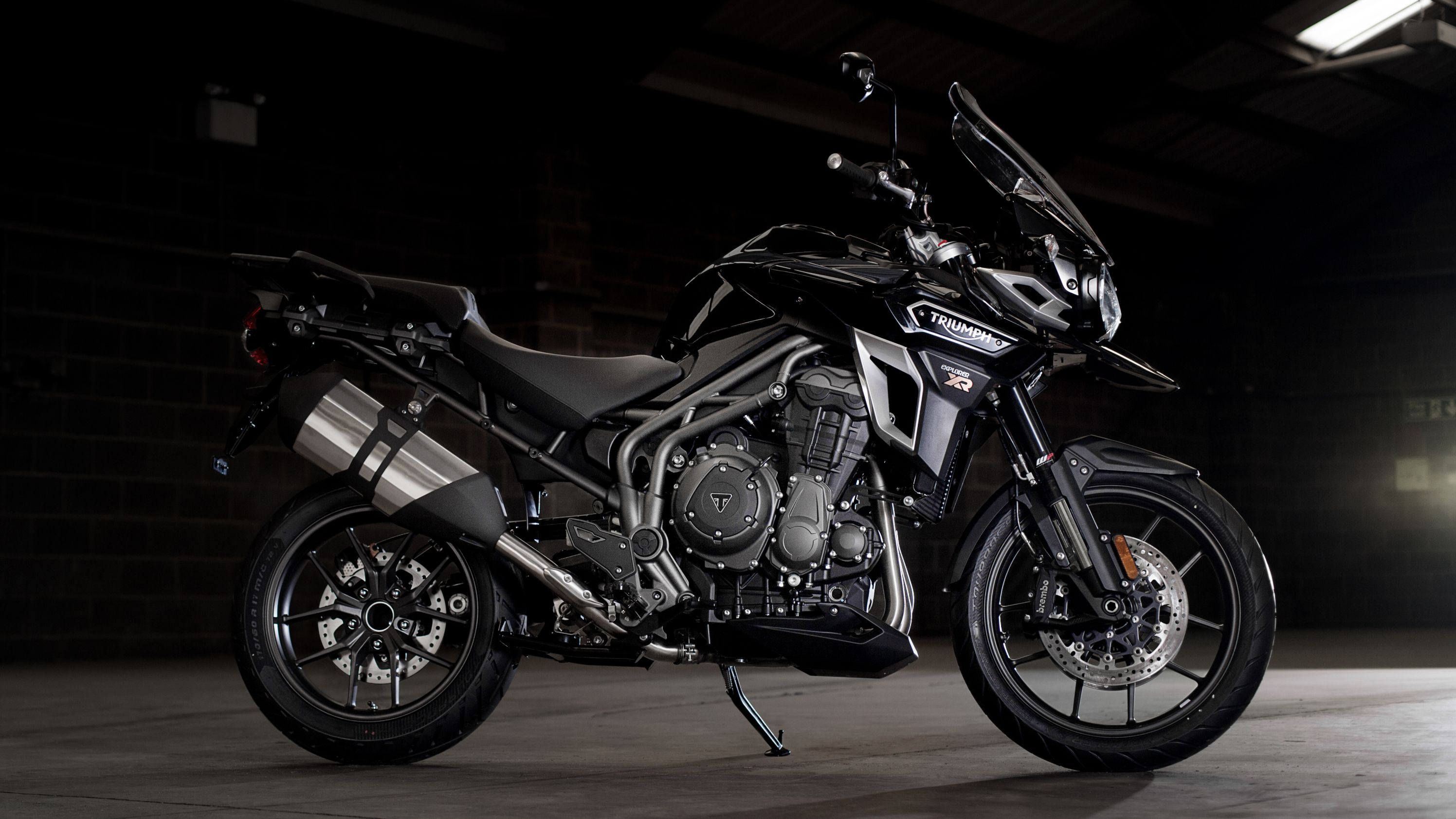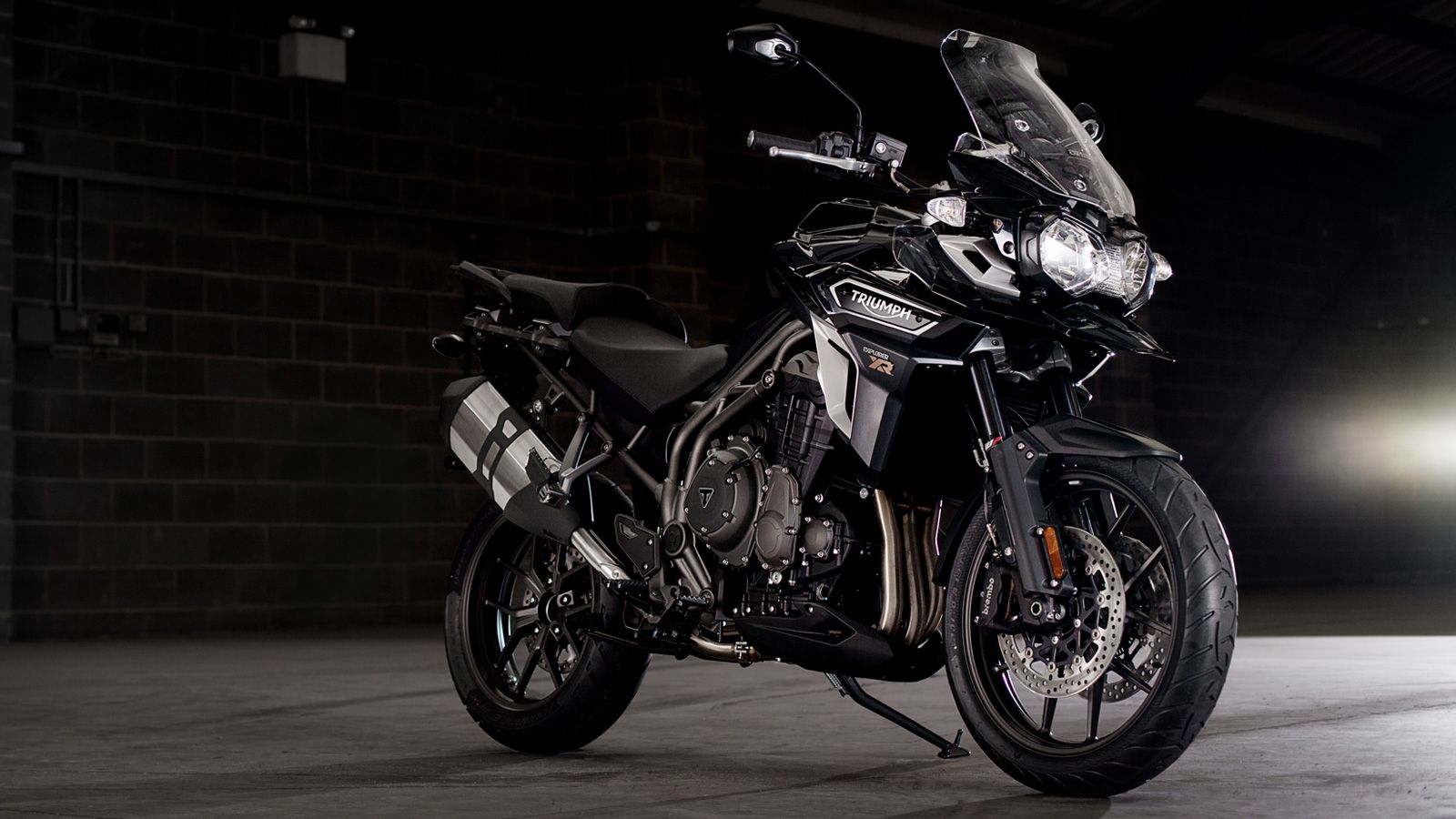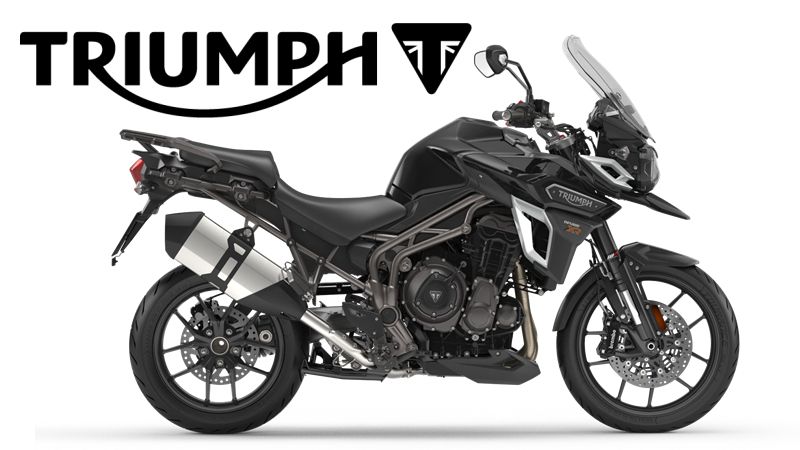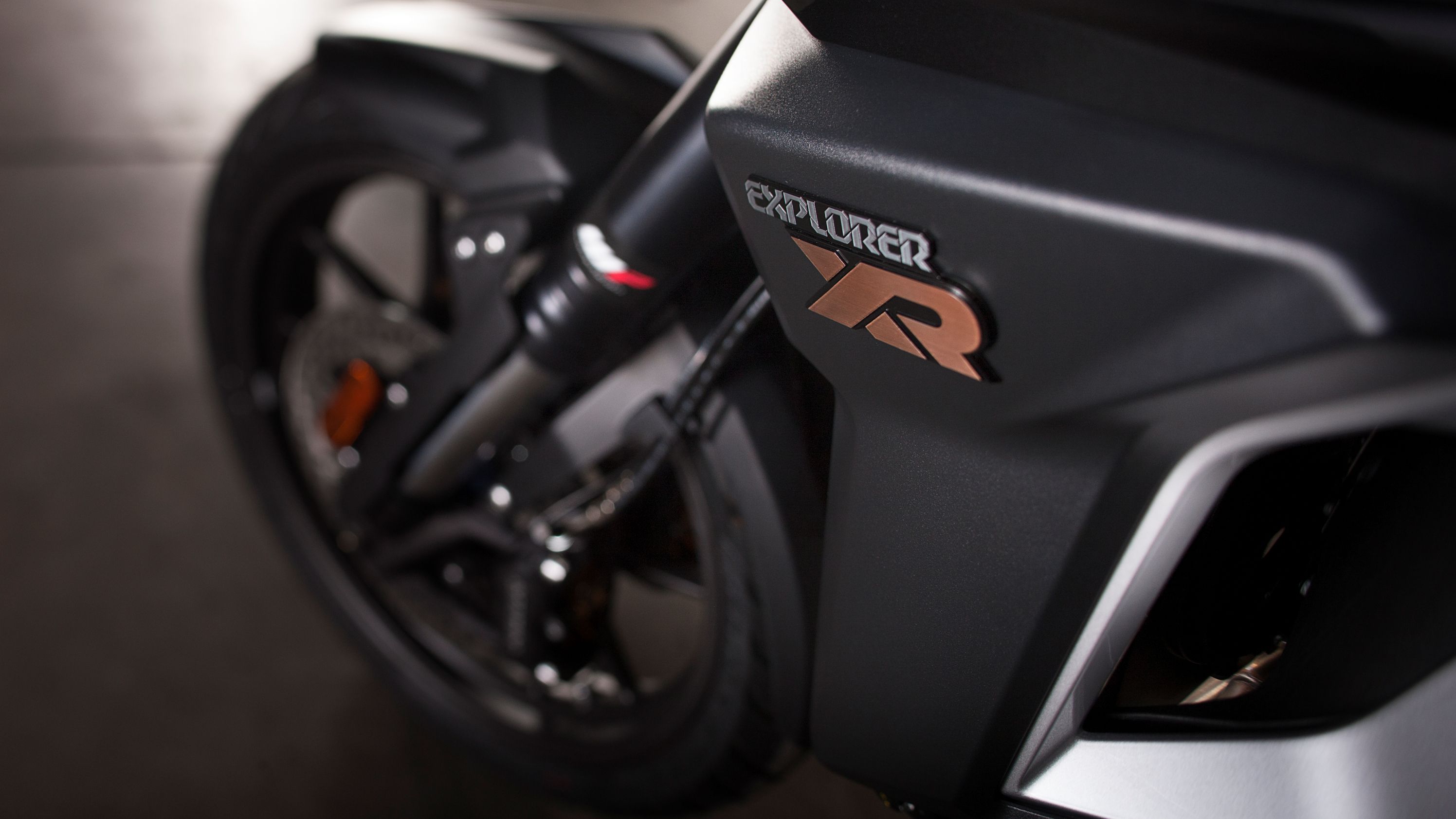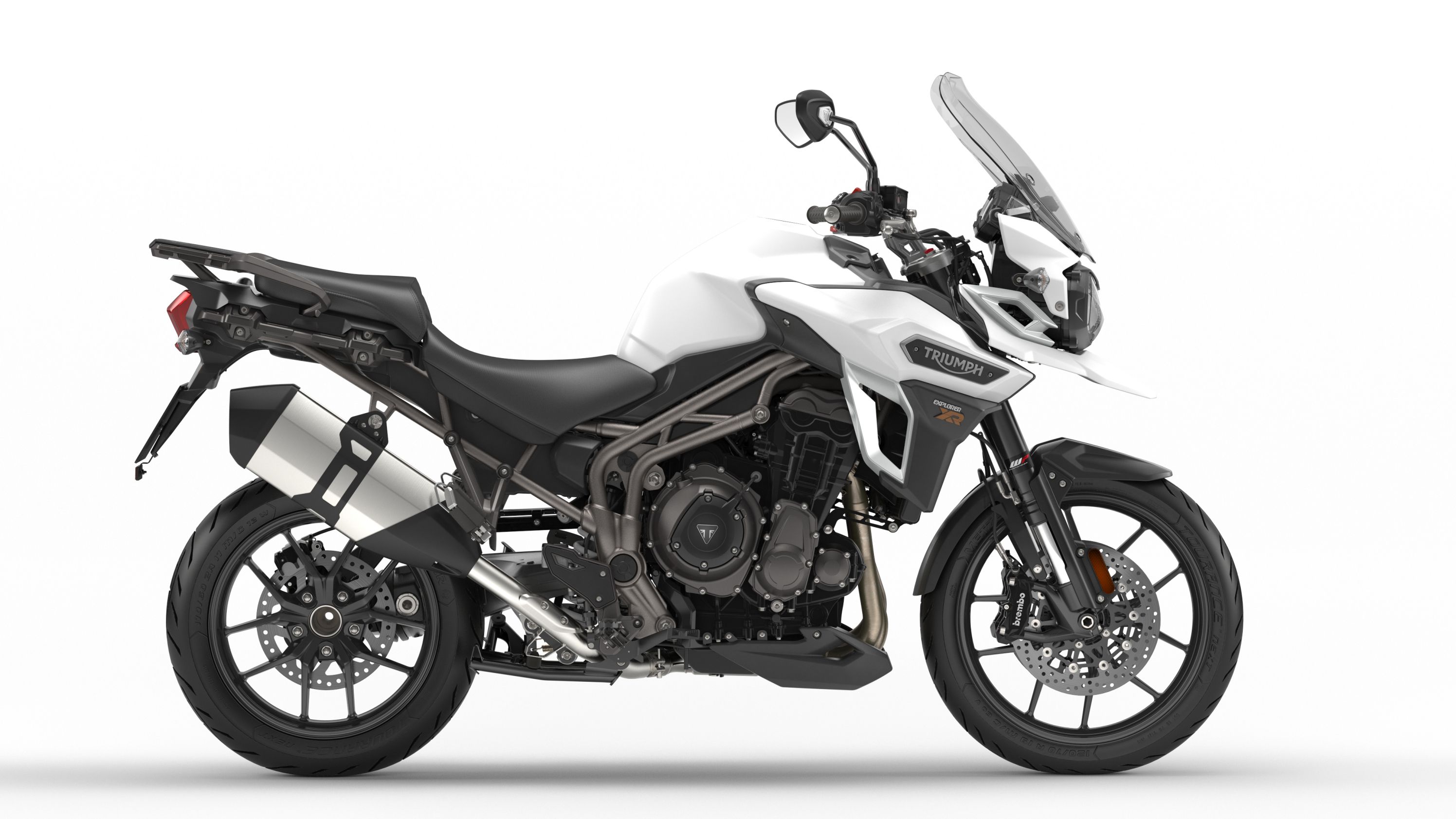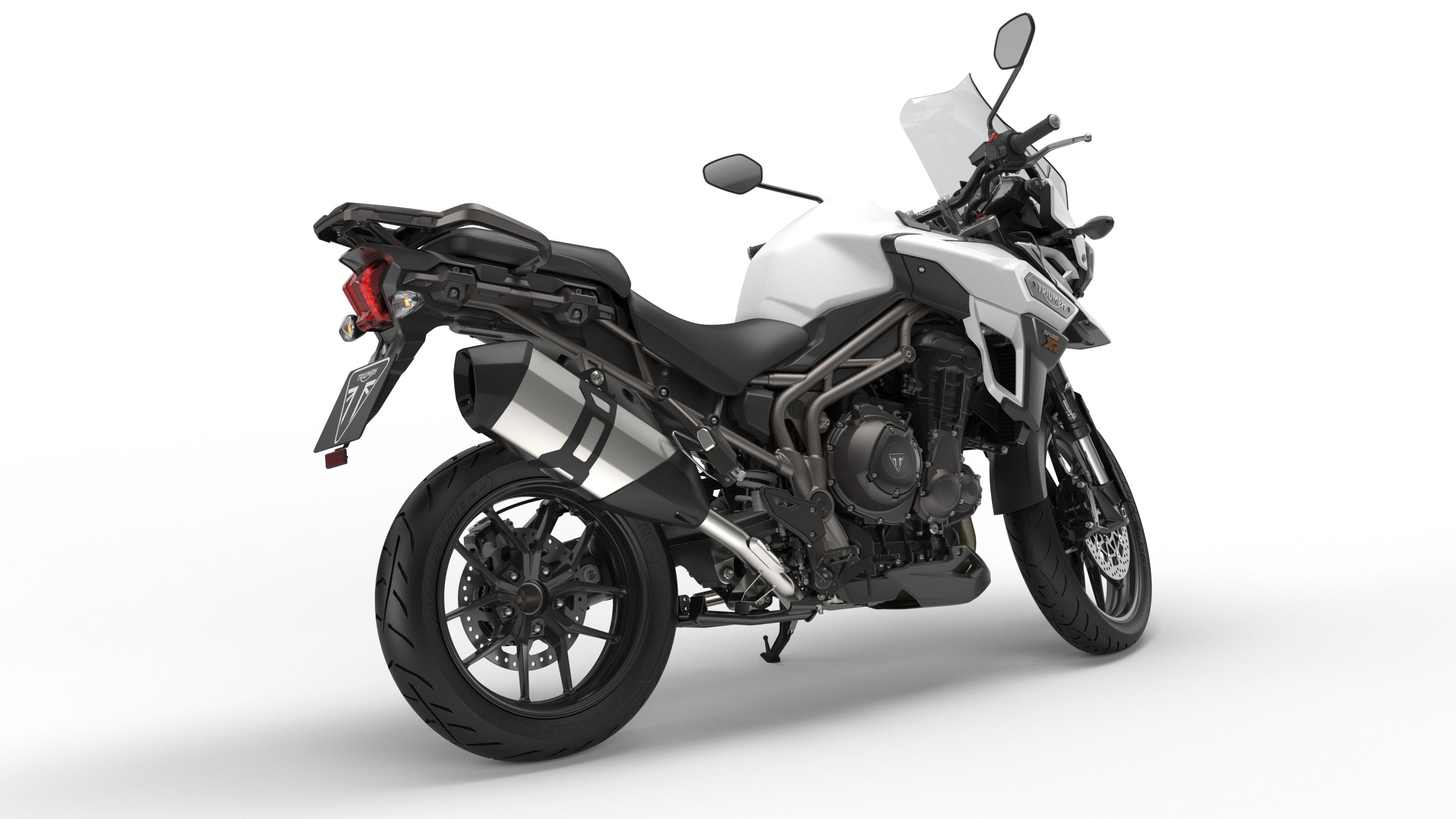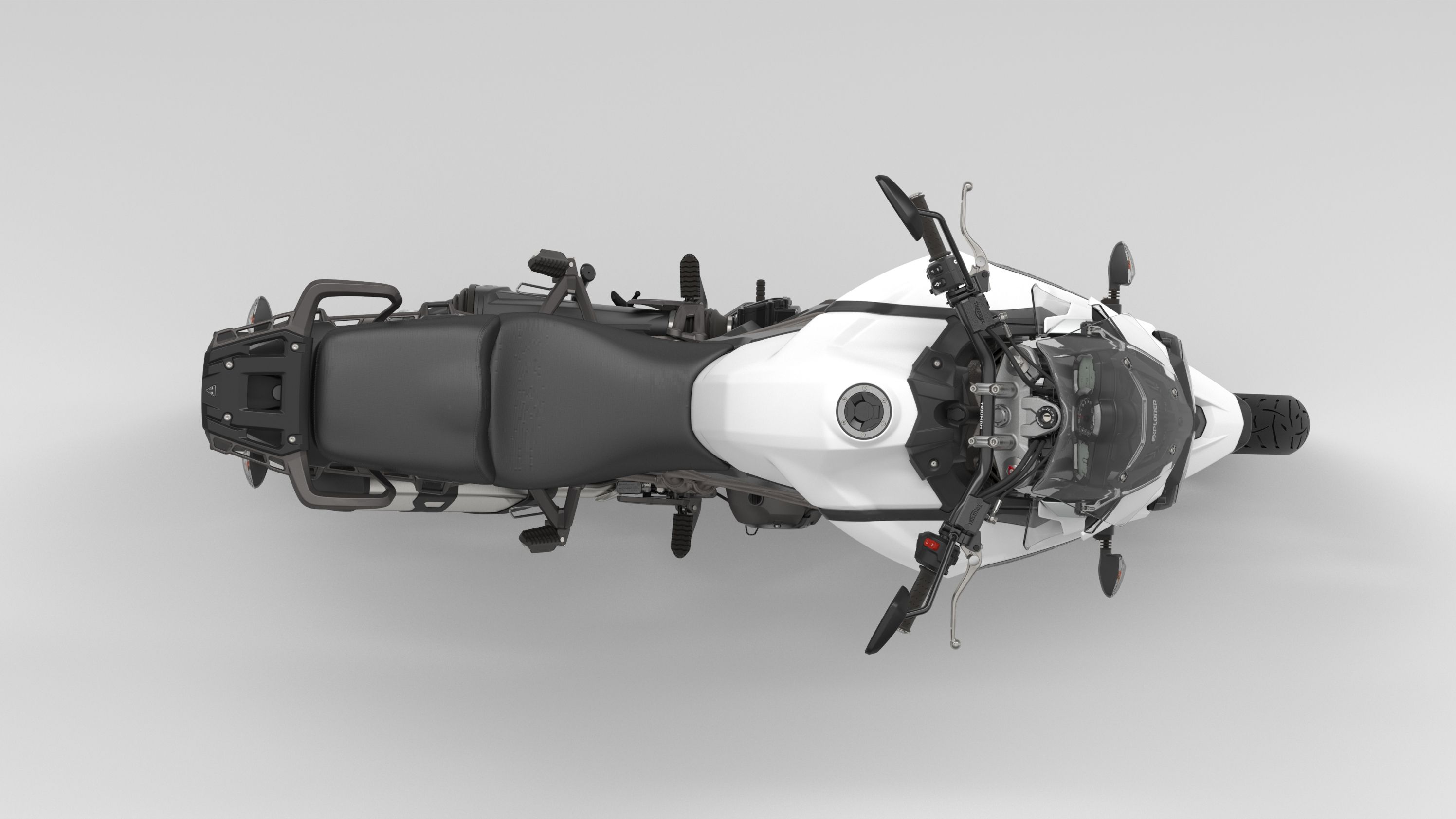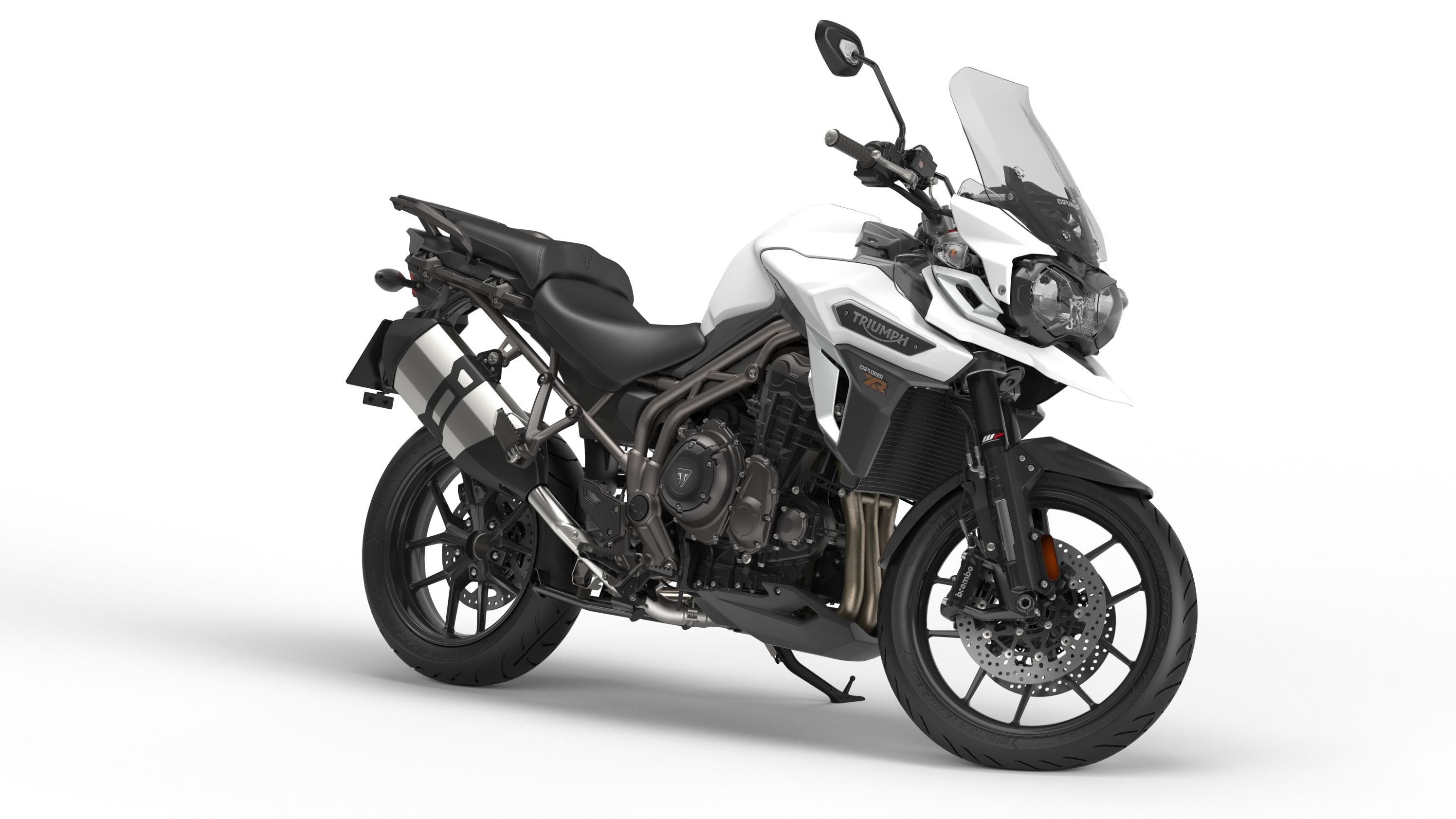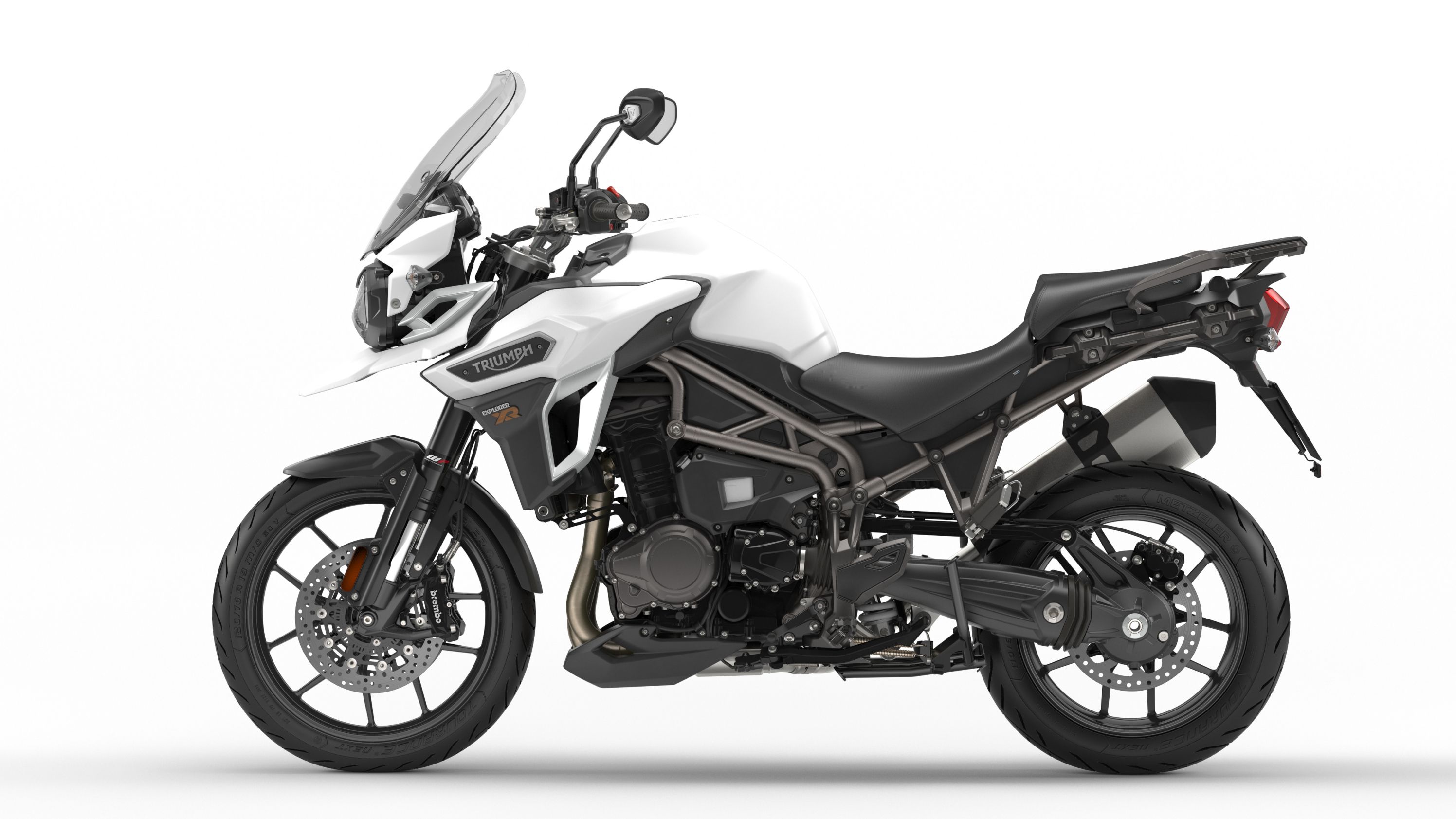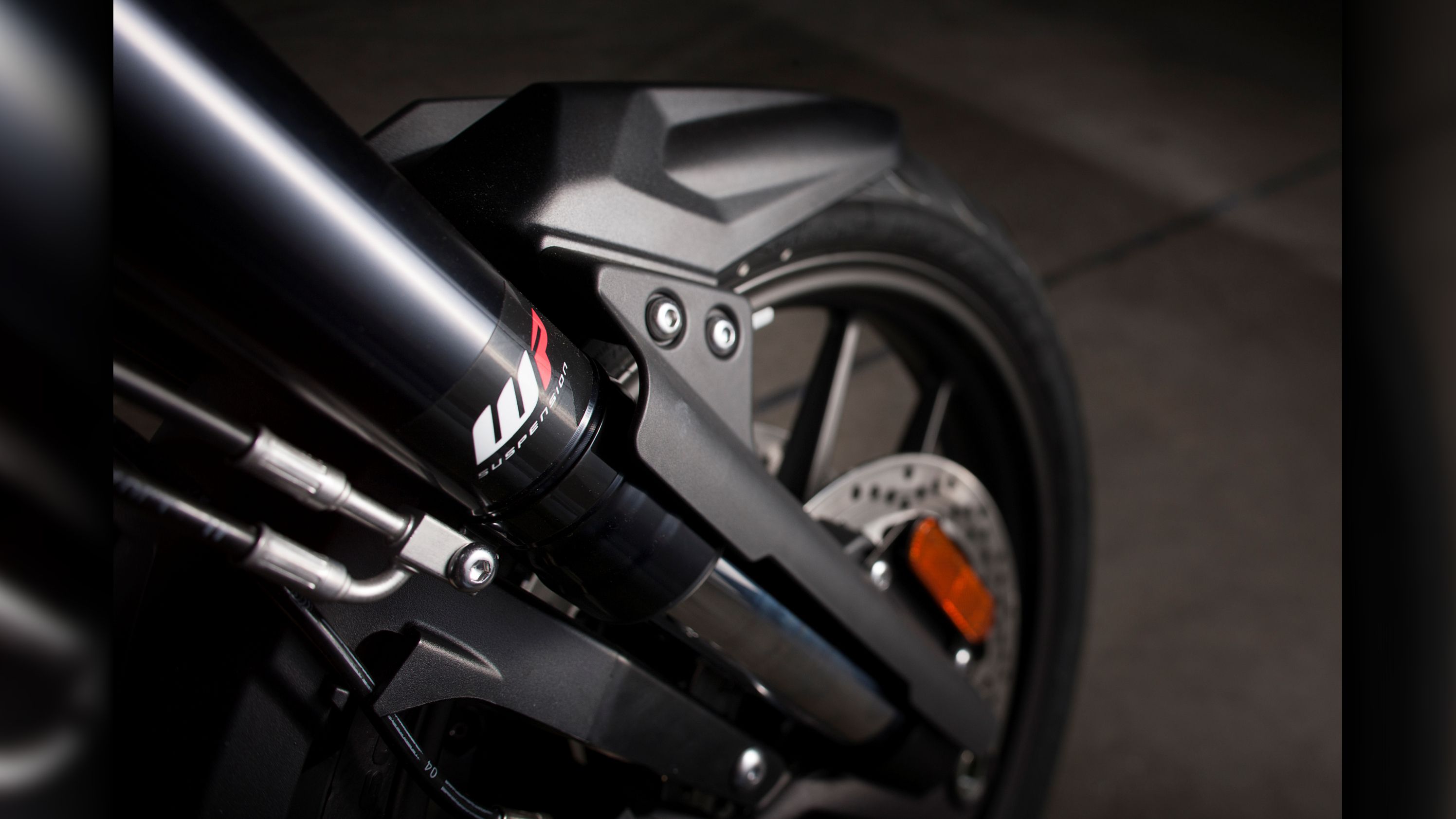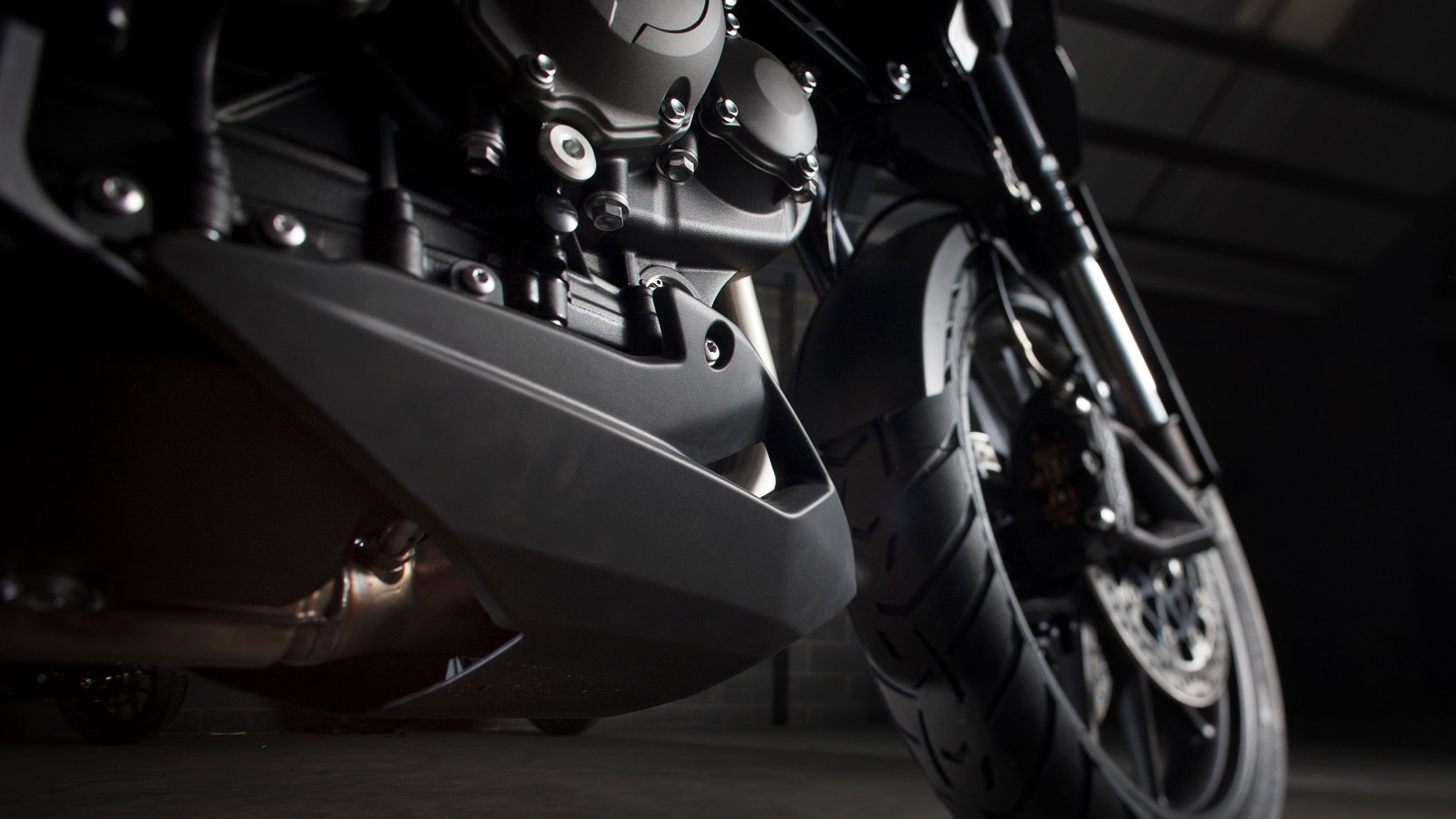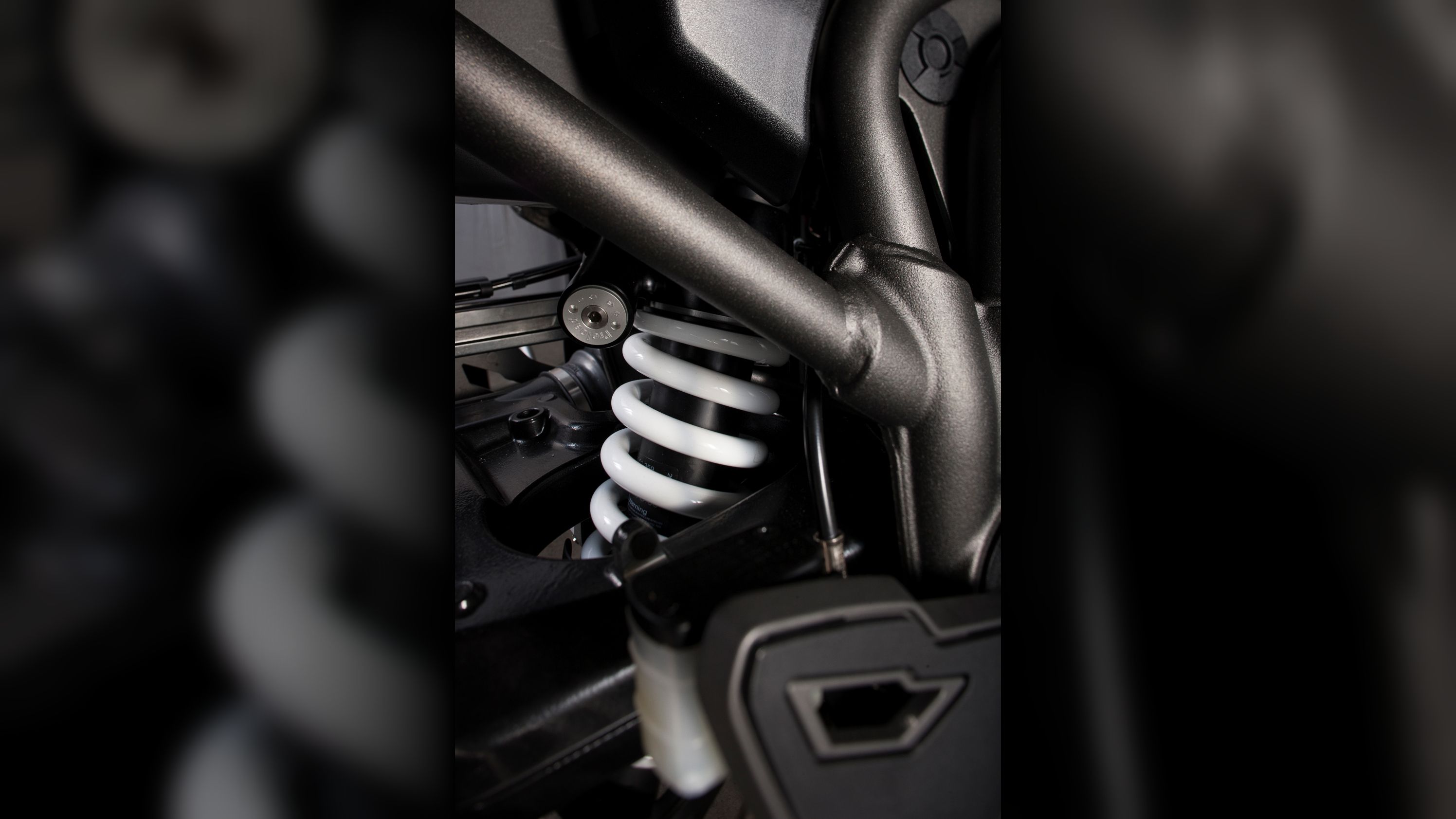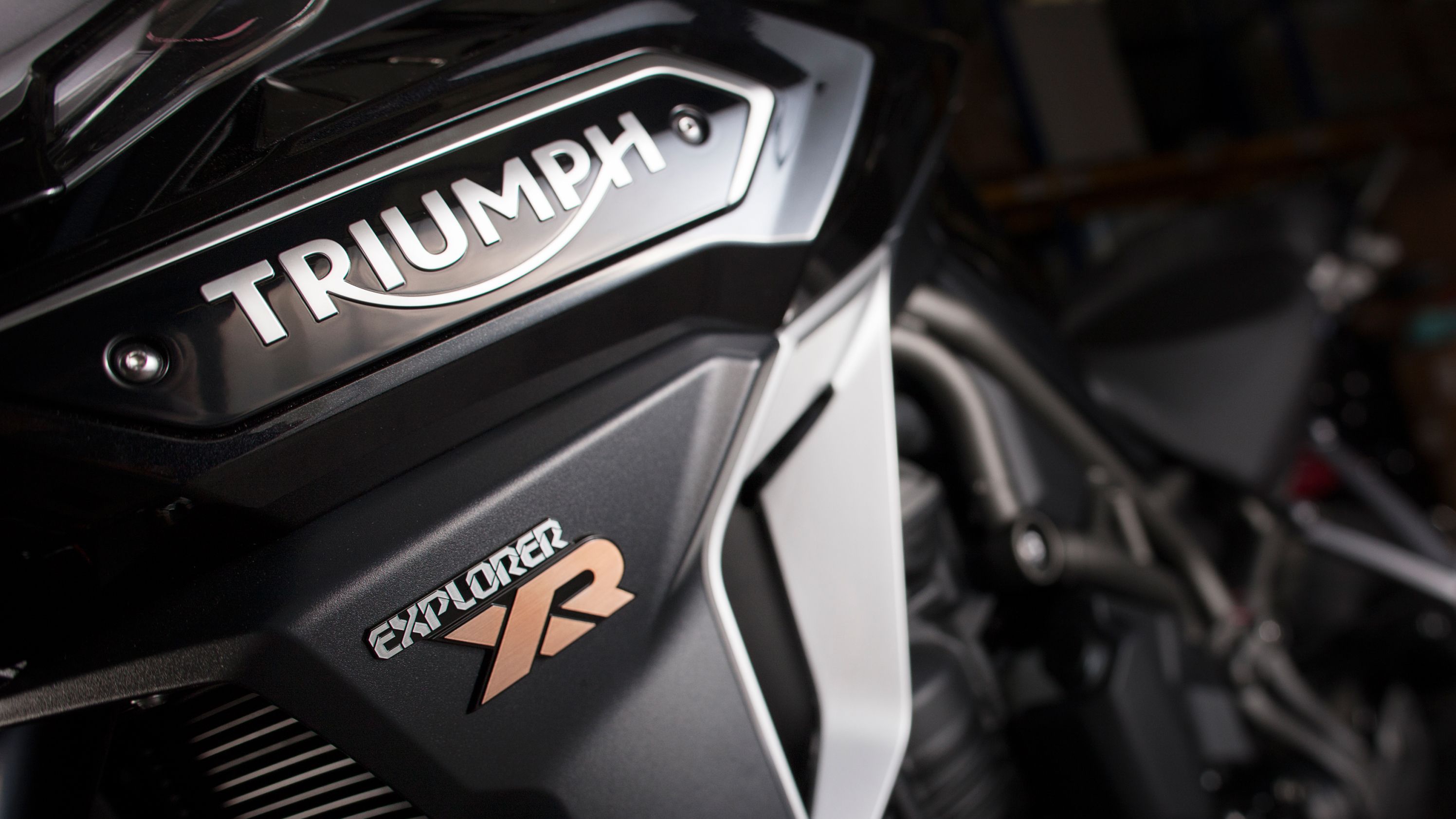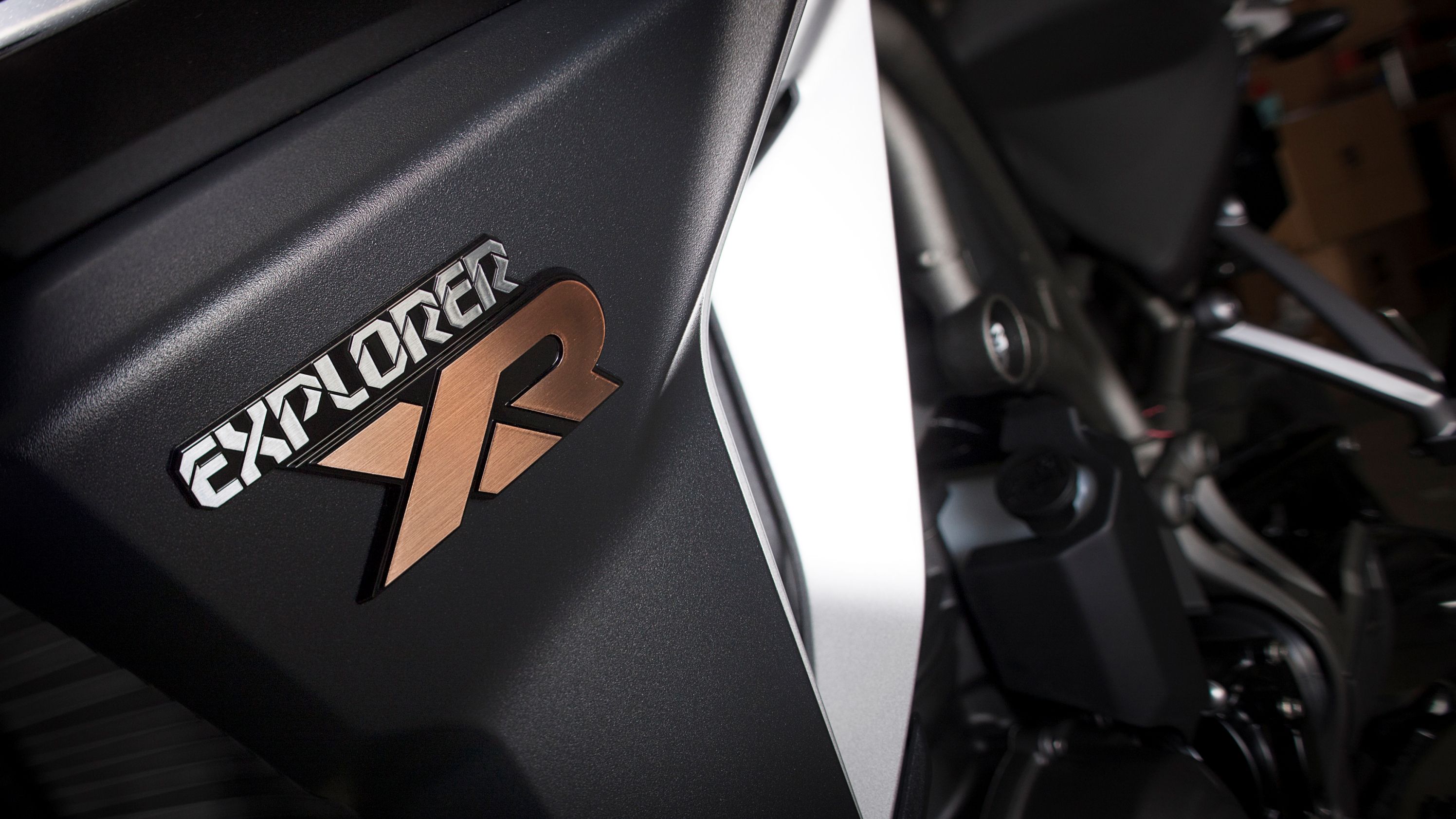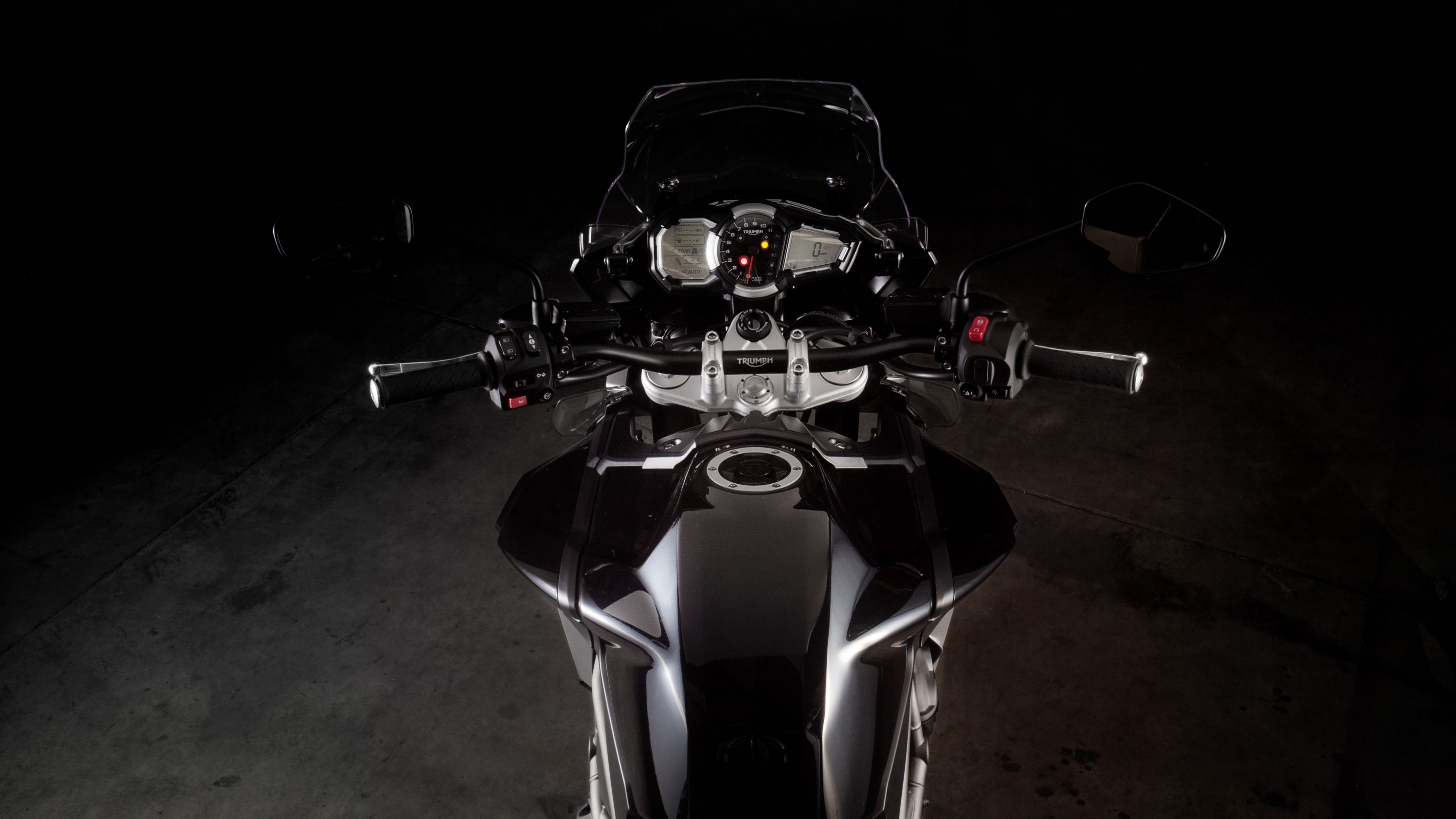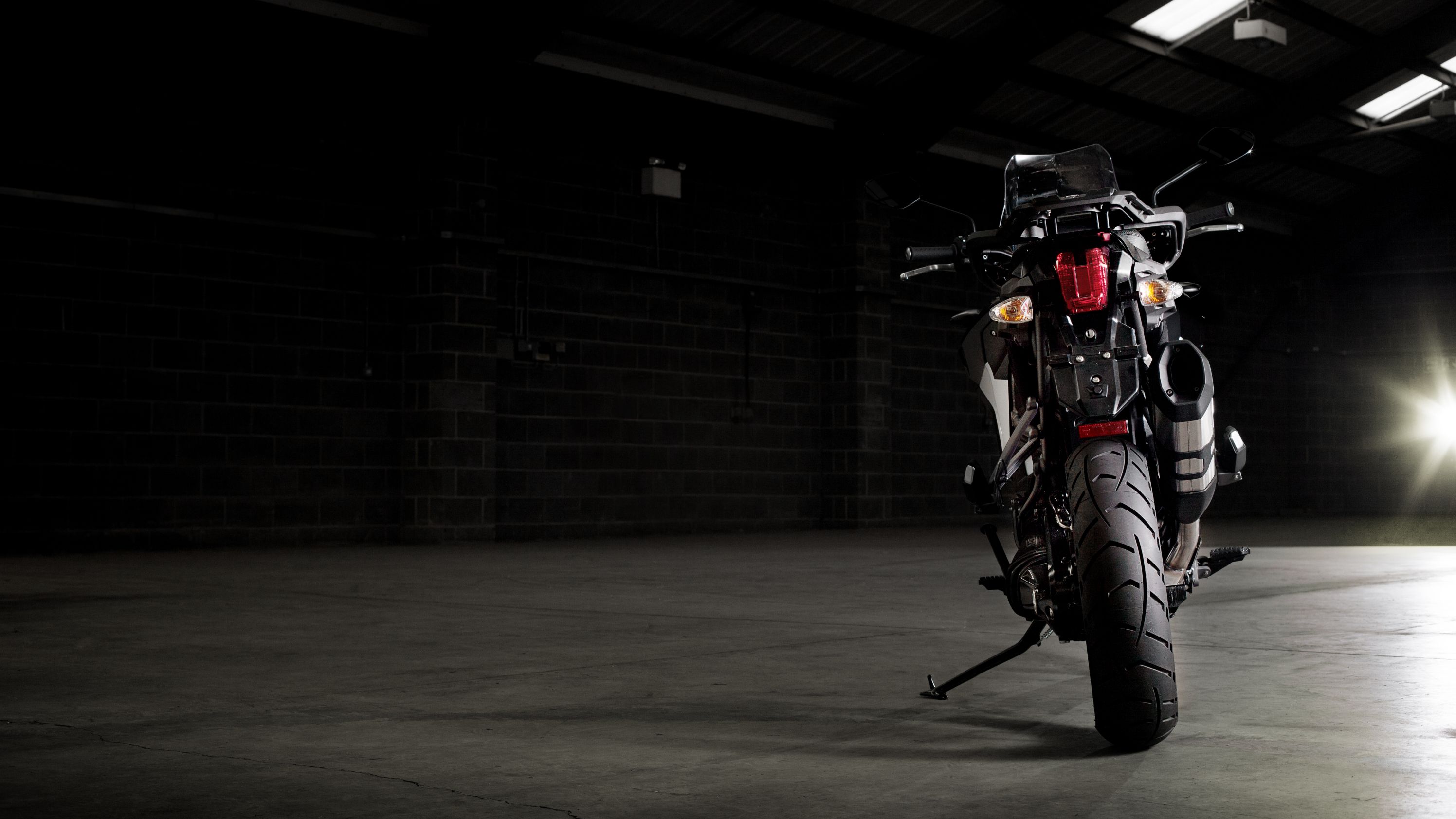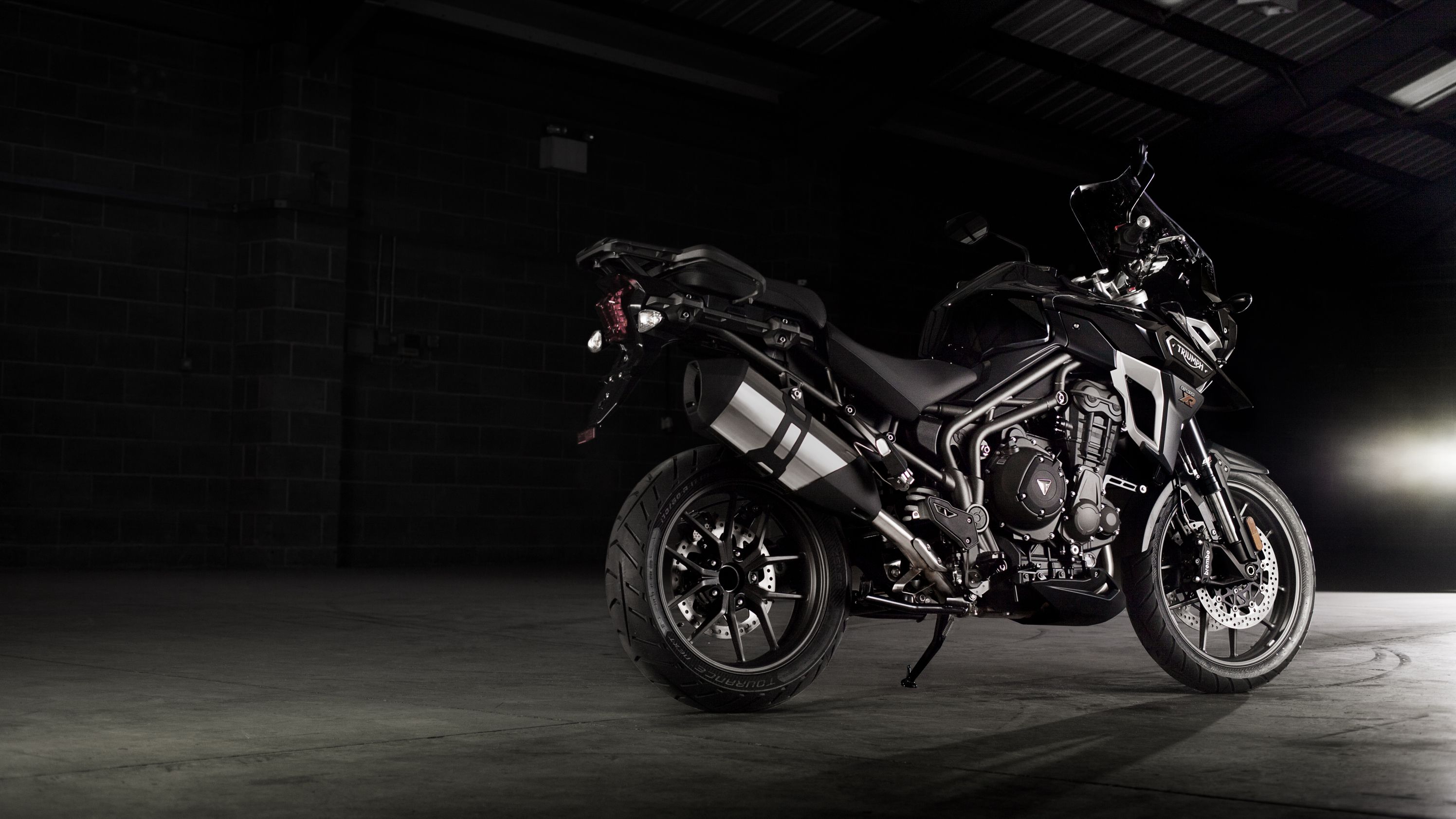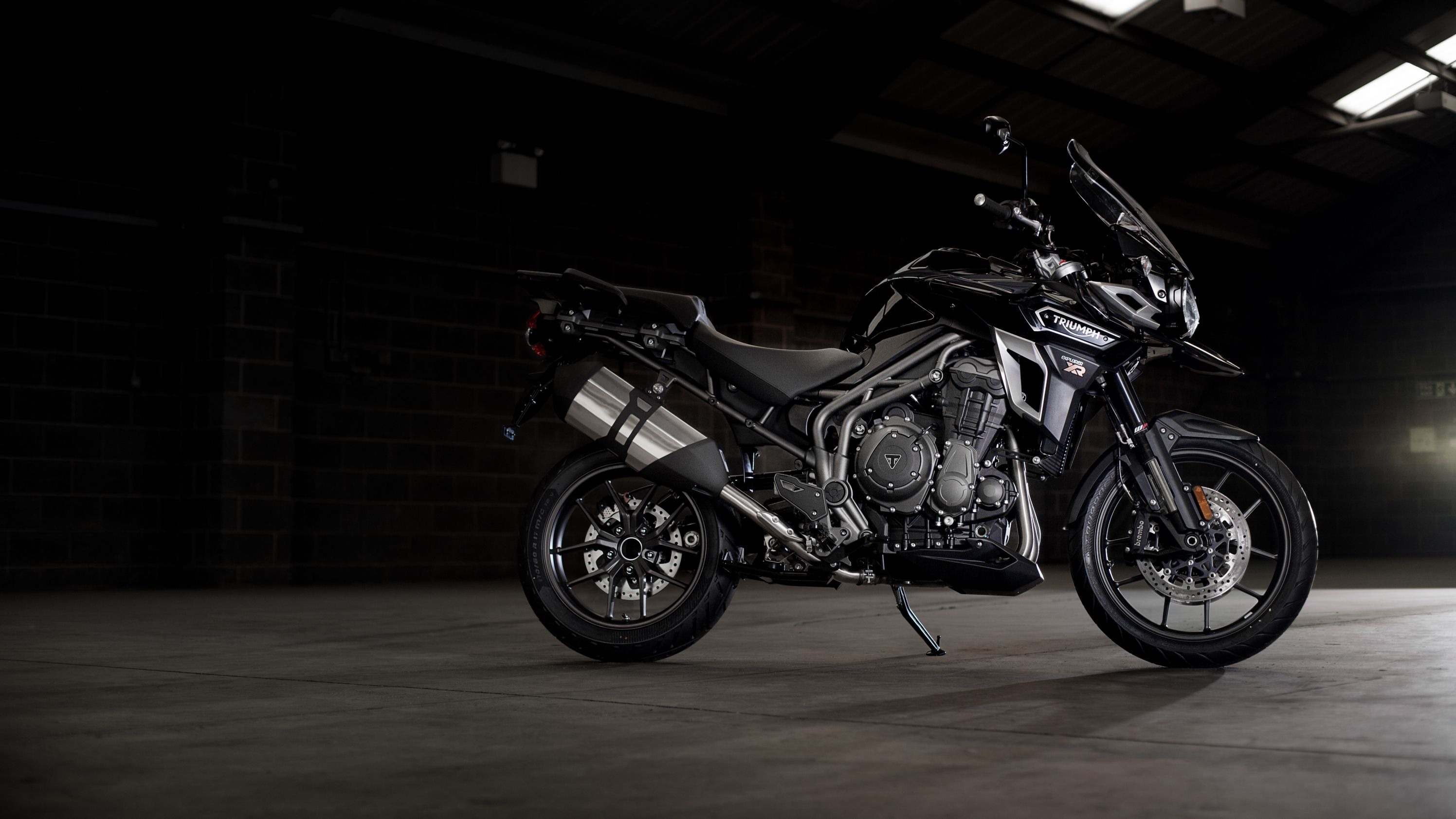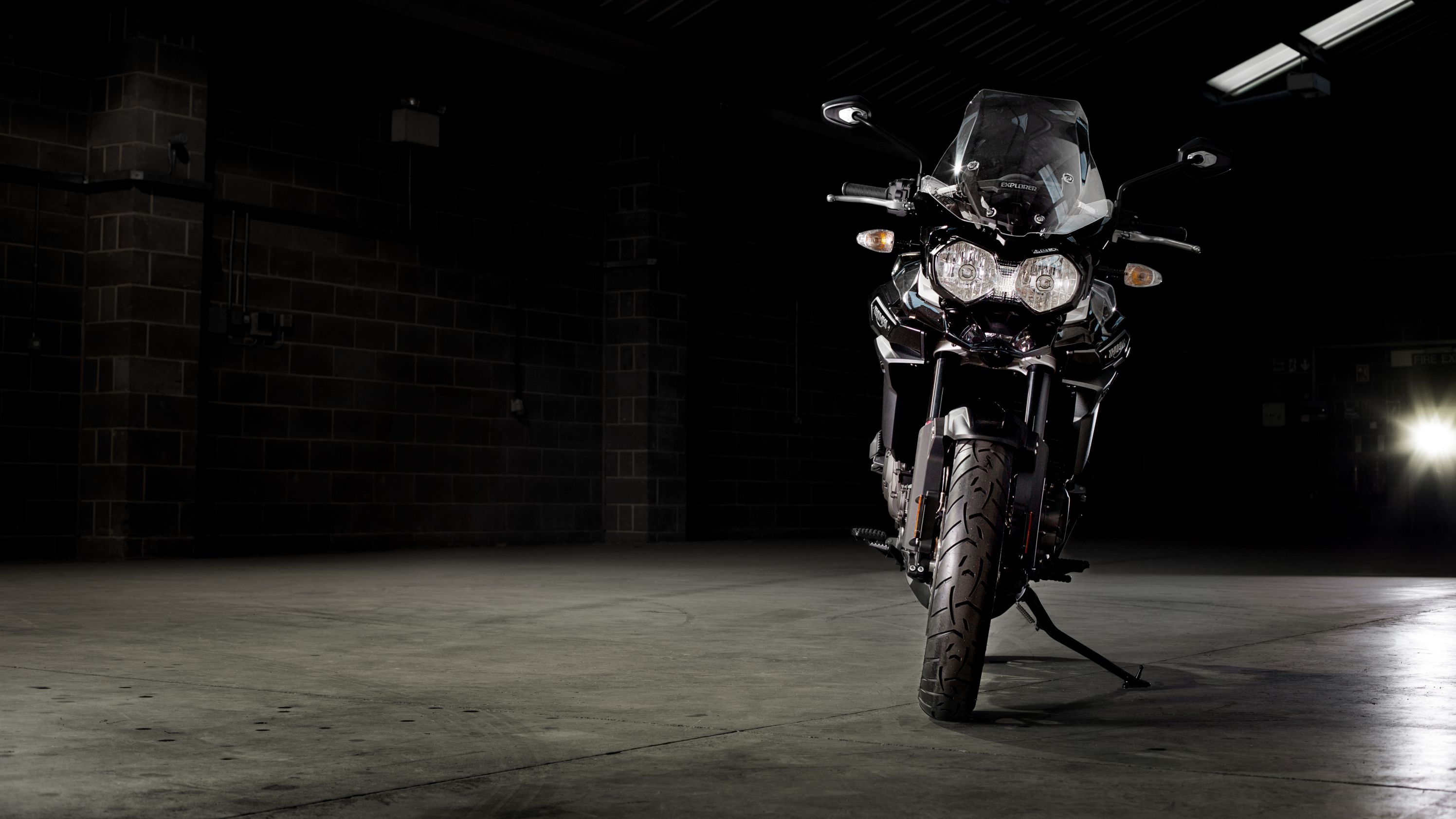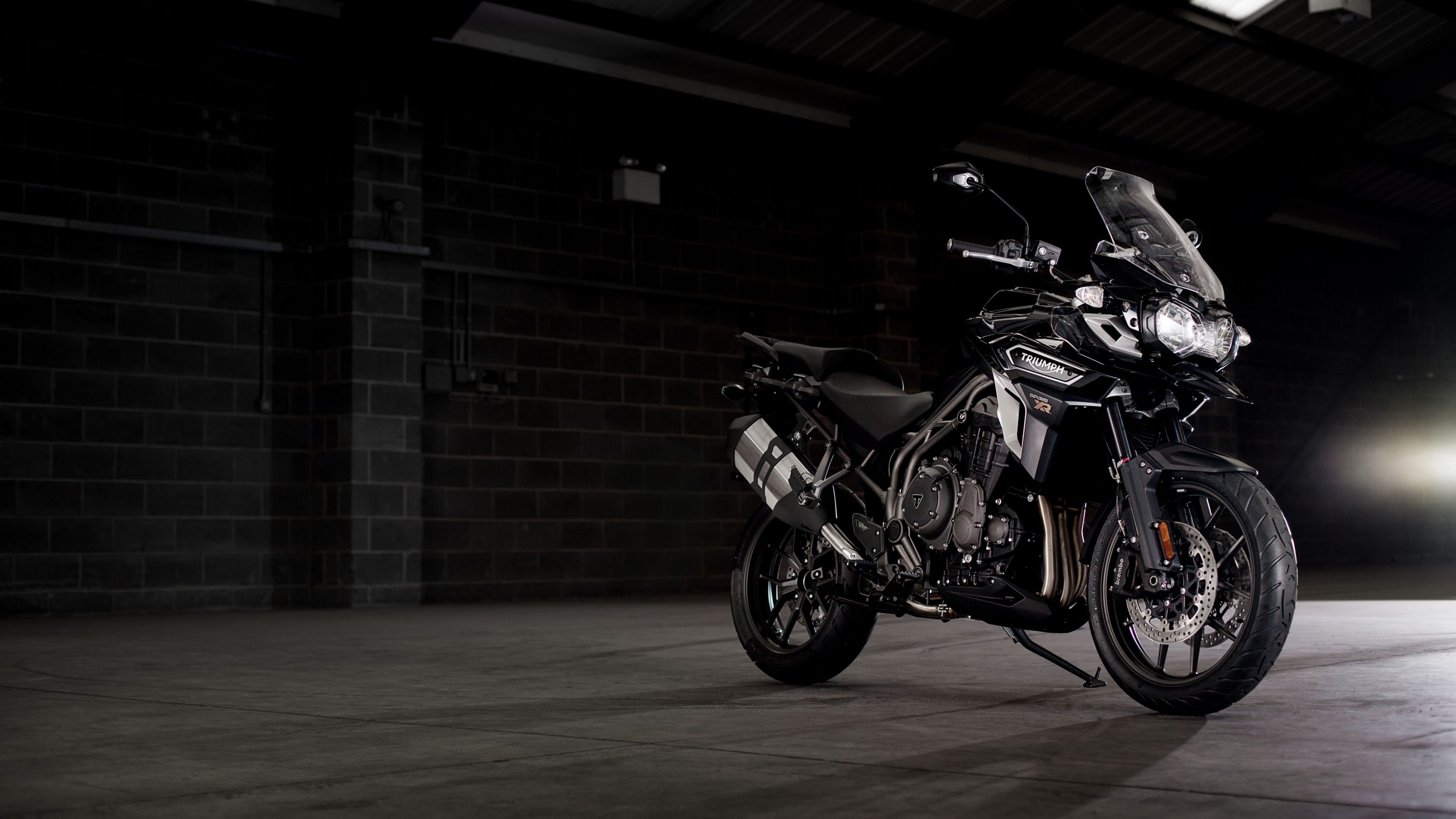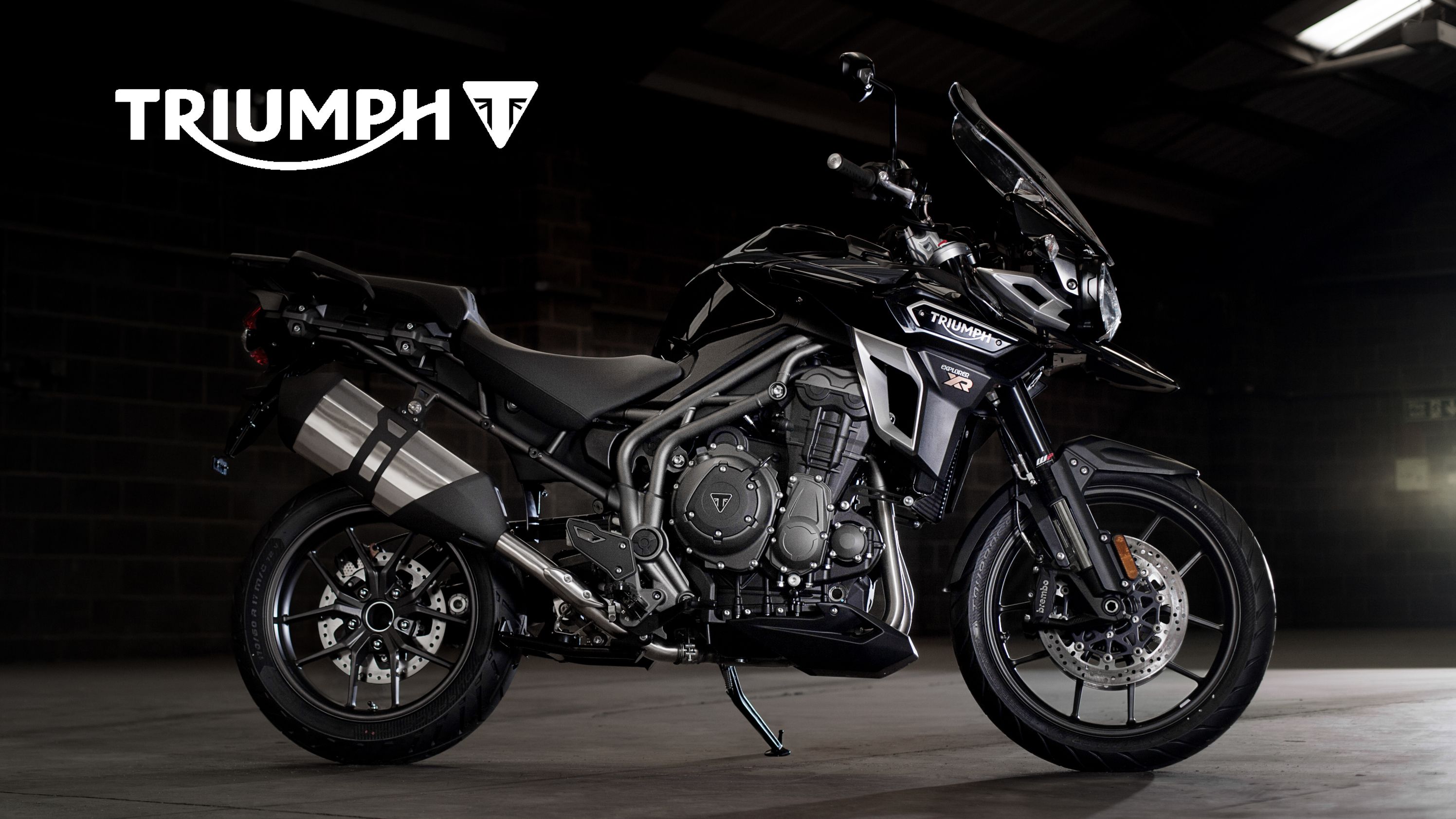It's really tough to make an adventure bike that will truly do it all and the folks down at Triumph Motorcycles don't even waste any time trying. While Triumph has the dirt-tastic XC sibling to cover the off-road work, the streetwise Tiger Explorer XR comes set up for more urban/civilized adventures with adjustable WP suspension components and Brembo brakes with ABS protection. A 1,215 cc three-banger mill drives it all with 139 horsepower on tap, enough to push it well into power-tourer territory. There are a number of variants built on the base XR, all of which come with more top-shelf bits, but don't be fooled into thinking the base model is all that lacking in any department 'cause it seems to have everything one needs to go traipsing hither and yon.
Continue reading for my review of the Triumph Tiger Explorer XR.
2016 - 2017 Triumph Tiger Explorer XR
- Make: Array
- Model: 2016 - 2017 Triumph Tiger Explorer XR
- Engine/Motor: inline-3
- [do not use] Vehicle Model: Array
Design
There are a few aesthetically pleasing adventure bikes out there, truly there are, but this ain't necessarily one of 'em. Head-on, the XR has a visage not unlike that of an oysterfish with wide cheekbones and a bird's beak entry to go with the crazy-looking, asymmetrical headlight arrangement and unusually-shaped (though electrically-adjustable) windshield. Add to that the handguards and mirrors sticking out the top-sides, and you end up with one crazy-looking contraption.
In profile, the front fairing looks even stranger as it's way wider than it is deep, but beyond that, the upper lines have that characteristic adventure-bike look with a tall fuel-tank hump to accommodate the 5.3-gallon fuel tank and a deep saddle that puts the rider in the bike rather than perched on top of it. The P-pad has a stadium rise to it that should provide great visibility for the passenger with a butt-retention capacity that will keep the pilot in place during hard acceleration. Grab bars and fold-up pegs round out the passenger's amenities.
Seat height is adjustable with a 33-inch to 33.7-inch range of motion for another layer of flexibility and comfort. Though not necessary for its intended terrain, an exhaust-header guard up front and upswept exhaust join the front and rear mudguards to tie right in with the dirtier side of the family and help to maintain that distinct adventure-bike look. In order to power your various mobile gadgets on your adventures, the XR comes equipped with a USB port and 12-volt power socket, because what adventure would be complete without being able to share it with the world on Facebook or YouTube?
Chassis
A tubular steel Trellis serves as the major structural component of the chassis, and as a minor player in the overall aesthetic where it peeks out from under the cowling. The steering head pulls the forks in for 23.1 degrees of rake, 3.9 inches of trail and some fairly agile handling characteristics. Out back, a cast-aluminum, single-side swingarm articulates the rear wheel and serves as a housing for the shaft-type final drive for a neat-and-clean finish to frame and drivetrain alike.
WP suspension components tame and support both ends of the XR with a set of inverted, 48 mm forks complete with a grime guard to protect the inner fork-tube seals. The front forks come with a 7.48-inch range of motion at the axle with rebound- and compression-damping adjustments on the fork caps. Out back, the WP monoshock has a 7.59-inch range of motion with the same adjustable rebound feature as the front forks, but it trades the variable compression-damping function for a hydraulic preload adjuster instead.
Triumph shows it's serious about braking power with a pair of 305 mm discs and Brembo monobloc radial-mount four-pot calipers. A somewhat-less-noble twin-pot Nissin caliper bites the 282 mm rear disc, and both ends come with switchable ABS overwatch so you can take or leave that safety net as you like.
Cast rims mount street-tastic hoops with a 120/70-19 up front and a 170/60-17 in back, and the ten-spoke wheels signal the factory's intent for this ride to be used on the black though I would submit that there ain't a thing wrong with using laced rims on the street.
Drivetrain
Triumph powers the XR with its 1,215 cc, 139-horsepower inline triple. Max power is developed at 9,300 rpm, but torque tops out at 6,200 rpm with 90.7 pound-feet on tap to push the 538-pound (dry) machine. Each cylinder sports four valves with DOHC timing and a liquid-cooling system to handle the waste heat and muffle much of the mechanical threshing noises coming from the crankcase.
Oversquare, the mill runs an 85 mm bore and 71.4 mm stroke with an 11-to-1 compression ratio that will need premium fuel to prevent knock/ping and dieseling. Electronic fuel injection meters the fuel with a ride-by-wire throttle that enables the use of the traction control and the riding-modes feature that bundles TC, ABS and throttle control together with optimal settings for “Road” and “Rain” conditions. Some of the other more expensive variants of the XR sport additional pre-programmed riding modes, but the base model has the minimum to safely manage life as a commuter or light tourer. It's this layer of interwoven safety nets that makes the XR appropriate for a range of uses that could see you caught out in weather. The factory finishes out the drivetrain with a torque-assist slipper clutch and six-speed gearbox. Since fuel economy is decent for a 1.2-liter, you could use it as a commuter and not break the bank; though if gas money is a problem you should probably be looking at something with about half this displacement.
Pricing
The base Tiger Explorer rolls for $16,200, and you can have it in any color you want, as long as you want black or white. Triumph shoots the “sheet metal” with a glossy Jet Black or the slightly less-glossy Phantom Black or a Crystal White ($16,450). The factory held onto all its colored paint for the upgraded variants, apparently.
Competitors
Triumph makes a top-notch product, so I wanted to find a match with an equal reputation for quality as well as fandanglery. I needed look no further than Europe's boot where I found Ducati's Multistrada 1200. Ducati's street-oriented adventure bike carries graceful lines with all the sex appeal usually associated with the brand, and bless the Italians, they can make even an adventure bike look good.
A subdued bird's beak fairing and bobbed front fender lead the way under a stylized windshield. Flylines are fairly similar as the Multistrada carries the same size fuel tank as the XR with a similar rider's butt-bucket and lofted pillion. Like the XR, the Duc comes with an adjustable seat, but sports a greater range of motion between 32.5-inches and 33.3-inches high. Both run Trellis bones and single-side swingarms with stressed-engine arrangements, but Ducati alone manages to get the full array of adjustments on both ends of its ride.
Triumph wins out in suspension travel against the 6.7-inches front and rear on the Duc, but that isn't really going to matter very much in an urban environment and both rides lean toward the luxury end of the spectrum. Though both run ABS protection with their brake systems, Ducati's is of the corner-sensing variety that balances braking effort to account for the expenditure of traction induced when cornering to help prevent lowsiders. Triumph has no answer for that.
The Multistrada comes with an 1,198.4 cc L-twin plant that runs with Ducati's signature Desmodromic valvetrain to time the four-valve heads. Compression is higher on the Duc at 12.5-to-1, and it manages a bit more power with 152 ponies and 94 pounds o' grunt versus 139/90 from the Tiger. The Testastretta-powered Multistrada weighs in at only 461-pounds (dry) against the 538-pound (also dry) Tiger, so that power difference is actually amplified a bit before it reaches the old heinie-dyno. That said; neither of these are race bikes, and you can only really use so much power in a civilized environment, after all.
Triumph gets a win at the checkout with a $16,200 base price versus $17,995 from the Eye-Tie. That's a pretty big bite, but you'll have to decide if it's worth it for the extra electronics yourself.
versus0}
“Ugly as a mud fence, but as form follows function, a work of art I'd say. The Tiger Explorer doesn't disappoint even if the seat height is pushing beyond what I consider to be my comfort zone. The base model is OK enough, but throw on the accessory engine/fairing guards, aluminum side cases and a top case, and you've got something you can do some serious interstate work on, with a friend if you like.”
She Said
My wife and fellow motorcycle writer, Allyn Hinton, says, "I disagree with my husband's disdain for the looks of this bike. I rather like it; but that said, if you're sitting on it, you don't have to look at it. Just walking around this bike, you can see that it's intended to take you far and wide: big comfortable seat for the rider and for the passenger, ample grab rails and places to hook bungees, nice big instrument cluster with analog and digital displays, and a rider triangle that definitely skews to the 'tourer' side of things. It's a very comfortable bike and the engine has plenty of power to take you over hill and dale."
Specifications
|
Engine & Transmission: |
|
|
Type : |
Liquid-cooled, 12 valve, DOHC, in-line 3-cylinder |
|
Capacity : |
1215cc |
|
Bore Stroke : |
85 mm / 71.4 mm |
|
Compression : |
11.0:1 |
|
Max Power EC : |
139 Hp (102 kW) @ 9,300 rpm |
|
Max Torque EC : |
90.7 FT-lbs (123 Nm) @ 6,200 rpm |
|
System : |
Ride by Wire, fuel injection |
|
Exhaust : |
Stainless steel 3 into 1 header system, side mounted stainless steel silencer |
|
Final drive : |
Shaft drive |
|
Clutch : |
Wet, multi-plate hydraulically operated, torque assist |
|
Gearbox : |
6-speed |
|
Chassis: |
|
|
Frame : |
Tubular steel trellis frame |
|
Swingarm : |
Single-sided, cast aluminium alloy with shaft drive |
|
Front Wheels : |
Cast aluminium alloy 10spoke 19 x 3.0in |
|
Rear Wheels : |
Cast aluminium alloy 10spoke 17 x 4.5in |
|
Front Tires : |
120/70 R19 |
|
Rear Tires : |
170/60 R17 |
|
Front Suspension : |
WP 48 mm upside down forks, rebound and compression damping adjustment on fork caps, 190mm travel |
|
Rear Suspension : |
WP monoshock, rebound damping adjustment, 193mm wheel travel, hydraulic preload adjustment |
|
Brakes Front : |
Dual 305 mm floating discs, Brembo monobloc 4-piston radial calipers, switchable ABS |
|
Brakes Rear : |
Single 282mm disc, Nissin 2-piston sliding caliper, switchable ABS |
|
Instrument Display and Functions : |
Instrument pack with analogue tachometer, fixed segment LCD display and multifunction dot matrix LCD display. Fixed segment LCD display: speedometer, fuel gauge, gear position indicator, service indicator, clock, ambient air temperature, coolant temperature. Multifunction DOT matrix LCD display: two Riding Modes (Road and Rain), windscreen adjustment, trip computer (journey distance), motorcycle information (odometer, range-to-empty alert, TPMS ready), settings menu, heated accessory status ready. |
|
Dimensions, Capacities, & Weights: |
|
|
Width Handlebars : |
32.7 in (830 mm) |
|
Height Without Mirror : |
55.1 in (1400 mm) - 57.9 in (1470 mm) with higher screen position |
|
Seat Height : |
33.0 - 33.7 in (837-857 mm) |
|
Wheelbase : |
59.8 in (1520 mm) |
|
Rake : |
23.1˚ |
|
Trail : |
3.9 in (99.2 mm) |
|
Dry Weight : |
538 lbs (244 Kg) |
|
Tank Capacity : |
5.3 US Gallon |
|
Fuel Consumption: |
40.6 US MPG |
|
Details: |
|
|
Colors: |
Phantom Black, Jet Black, Crystal White |
|
Price: |
Jet Black: $16,200, Colors: $16,450 |
References
See our review of the Ducati Multistrada 1200.

